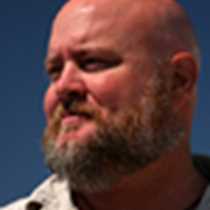San Ignacio & Sierra de San Francisco
Our day started early as the National Geographic Sea Bird entered the harbor in Santa Rosalia; we soon boarded several cars and headed north along the famous transpenisular Highway No. 1 to the sleepy town of San Ignacio, were we stopped for some snacks and coffee. There we were informed that the wind had picked up in the lagoon and that boat trips there were cancelled. However, this gave us the unique opportunity to explore a most interesting part of the peninsula that many of us had long wished to visit.
Thanks to the magic and flexibility of true expedition travel, we headed into the heart of the Sierra de San Francisco, home of some of the most magnificent cave paintings in the world. During our trip along the desert we had the chance to admire how changes in elevation, soil composition and humidity influence plant communities. Adam’s trees heavily covered by Spanish moss – a bromeliad that looks like a messy bird nest, deep canyons covered by blue palm trees, and the conspicuous presence of the unique boojum tree were some of the plant marvels that kept some of the longer-haired naturalist on their toes.
After a refreshing lunch provided by our never-tiring hotel department, we visited the “Cave of the Mouse,” so named after French geographer León Diguet mistaken a short-and-round eared mountain lion for a mouse in 1890. We all admired the same mountain lion today, still painted in black and surrounded by bi-colored human figures, pronghorn antelope, mule deer and desert bighorn sheep. Numerous caves in the area show a great diversity of designs, human and animal forms, many of them of huge proportions. Some made 7,500, by a group of people from whom we know very little.
When the first Jesuit missionaries that arrived to the peninsula during the late 1600’s and early 1700’s and inquired about the paintings, the natives vaguely answered that they were made by their ancestors, but were completely ignorant of their meanings. Today we could only marvel for the endurance and adaptability that those early artists had in order to survive in such a harsh environment.
After awhile we made it back to the ship, happy after having had the chance to visit a marvelous place that was declared a World Heritage site by the UNESCO in 1993.
We can’t say that every day, huh?
Our day started early as the National Geographic Sea Bird entered the harbor in Santa Rosalia; we soon boarded several cars and headed north along the famous transpenisular Highway No. 1 to the sleepy town of San Ignacio, were we stopped for some snacks and coffee. There we were informed that the wind had picked up in the lagoon and that boat trips there were cancelled. However, this gave us the unique opportunity to explore a most interesting part of the peninsula that many of us had long wished to visit.
Thanks to the magic and flexibility of true expedition travel, we headed into the heart of the Sierra de San Francisco, home of some of the most magnificent cave paintings in the world. During our trip along the desert we had the chance to admire how changes in elevation, soil composition and humidity influence plant communities. Adam’s trees heavily covered by Spanish moss – a bromeliad that looks like a messy bird nest, deep canyons covered by blue palm trees, and the conspicuous presence of the unique boojum tree were some of the plant marvels that kept some of the longer-haired naturalist on their toes.
After a refreshing lunch provided by our never-tiring hotel department, we visited the “Cave of the Mouse,” so named after French geographer León Diguet mistaken a short-and-round eared mountain lion for a mouse in 1890. We all admired the same mountain lion today, still painted in black and surrounded by bi-colored human figures, pronghorn antelope, mule deer and desert bighorn sheep. Numerous caves in the area show a great diversity of designs, human and animal forms, many of them of huge proportions. Some made 7,500, by a group of people from whom we know very little.
When the first Jesuit missionaries that arrived to the peninsula during the late 1600’s and early 1700’s and inquired about the paintings, the natives vaguely answered that they were made by their ancestors, but were completely ignorant of their meanings. Today we could only marvel for the endurance and adaptability that those early artists had in order to survive in such a harsh environment.
After awhile we made it back to the ship, happy after having had the chance to visit a marvelous place that was declared a World Heritage site by the UNESCO in 1993.
We can’t say that every day, huh?




